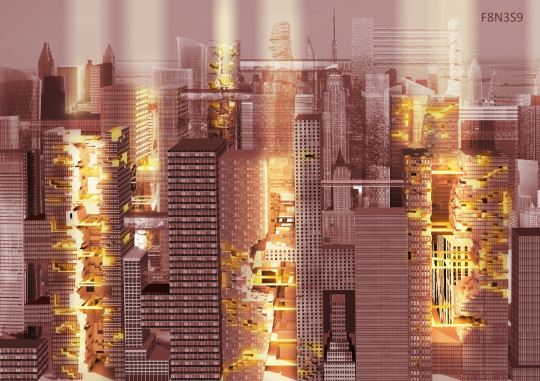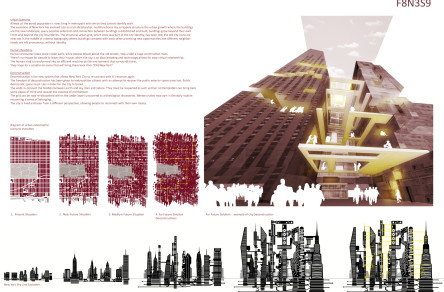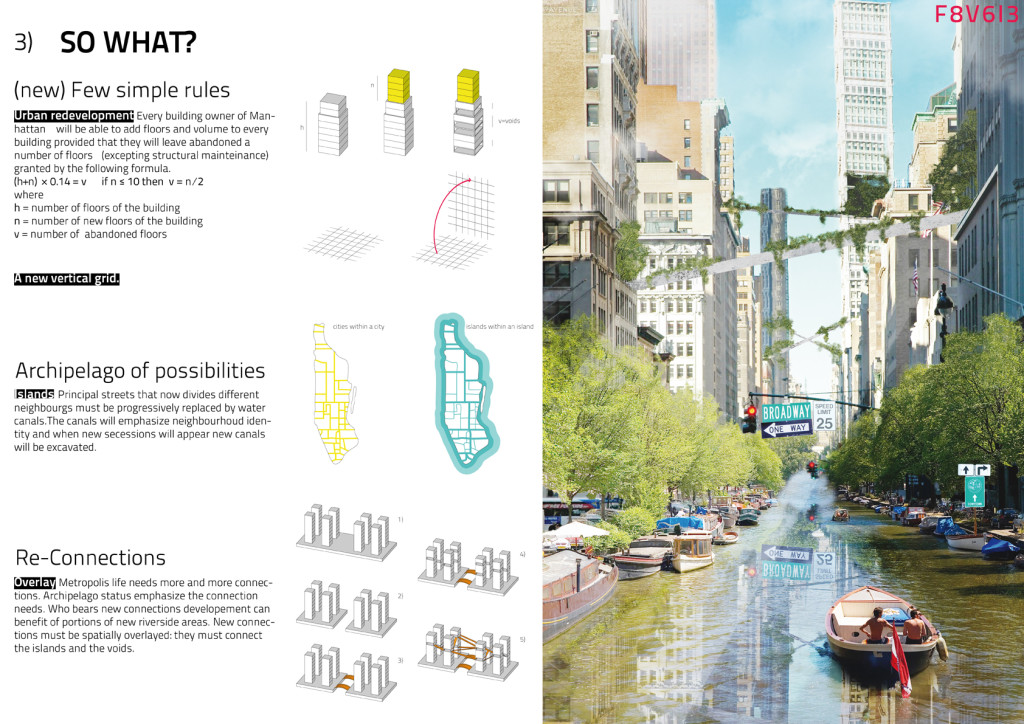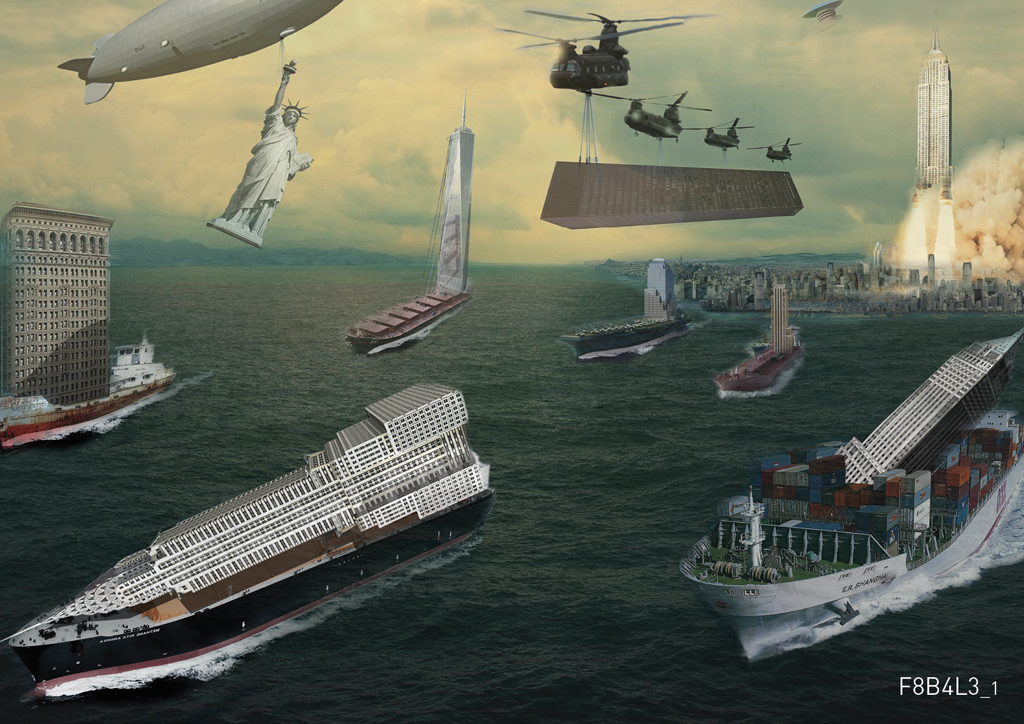Info:
Title: Urban Scenario - Code: F8N3S9Contest: NY / 2012
By: S. Ferreira Rodrigues Pereira - M. Franco Sêrro Caiado
Views: 5953 Likes: 2
Votes:
JOSHUA PRINCE-RAMUS1 EVA FRANCH I GILABERT7 ROLAND SNOOKS9 SHOHEI SHIGEMATSU9 ALESSANDRO ORSINI6 MITCHELL JOACHIM15.5
Urban Scenario

 Urban Scenario Almost all the world population is now living in metropolis with which they cannot identify with. The evolution of New York has evolved into an arch-dictatorship: multifunctional sky scrappers structure the urban growth where the buildings are the new landscape; every possible extension and connection between buildings is established and built; buildings grow beyond their own limits and beyond the city boundaries. The structural urban grid, which once was part of the city identity, has been lost; the old city icons are now lost in the middle of a dense topography where buildings compete with each other promising new opportunities; the different neighborhoods are left anonymous, without identity.
Urban Scenario Almost all the world population is now living in metropolis with which they cannot identify with. The evolution of New York has evolved into an arch-dictatorship: multifunctional sky scrappers structure the urban growth where the buildings are the new landscape; every possible extension and connection between buildings is established and built; buildings grow beyond their own limits and beyond the city boundaries. The structural urban grid, which once was part of the city identity, has been lost; the old city icons are now lost in the middle of a dense topography where buildings compete with each other promising new opportunities; the different neighborhoods are left anonymous, without identity.
Human Relations
Human encounter takes place inside walls, while people dream about the old streets, now under a huge construction mass.
There’s no reason for people to leave their houses when the city is so disorientating and technology allows for easy virtual relationships.
The human kind is transformed into an efficient machine by the environment that surrounds them.
They hope for a solution to come that will bring them back their ” Old New York”.
Deconstruction
Deconstruction is the new system that allows New York City to re-connect with it´s essence again.
The freedom of deconstruction has been given to metropolitan citizens with an attempt to recover the public exterior space once lost. Public democratic space must rule in order for the city to bread.
The voids re-connect the relation between earth and sky, man and nature. They must be respected as such so their contemplation can bring back some peace of mind and recover the essence of architecture.
The grid can be now re-discovered within the under layers uncovered as archeological discoveries. Memory takes now part in the daily routine recovering a sense of belonging.
The city is lived and seen from a different perspective, allowing people to reconnect with their own routes.






